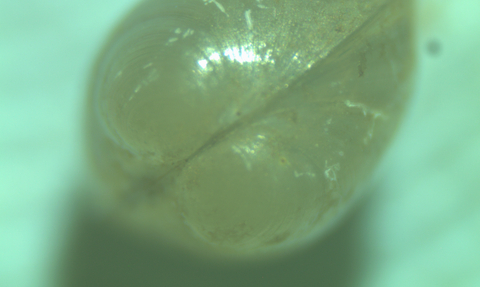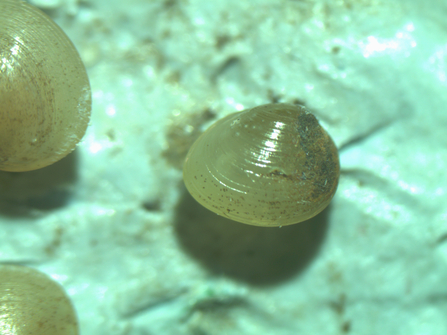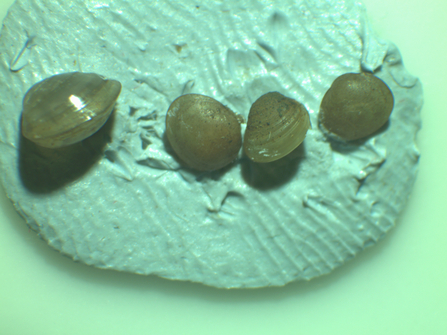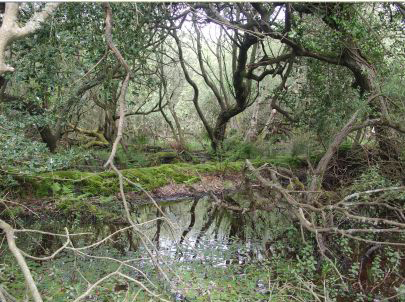
A pea clam hinge seen under the microscope.
Freshwater Pea Mussels and Pea Clams
Pea clams (Pisidium spp.) are a genus of tiny freshwater bivalve mollusc of a size generally less than 1cm (with the exception of Pisidium amnicum, which has been recorded at sizes just over 1cm). They are “collector-filterers”, using a small siphon to collect miniscule pieces of organic material as well as microscopic organisms on which to feed. Pea clams use a tongue-shaped foot to move, much like a snail; they also use this foot to aid them in burrowing beneath the sediment, from which they can protrude their siphon to collect passing food. Burrowing also enables the clams to survive dry periods, when their usual watery habitats disappear temporarily.

Pea clam seen under the microscope.
Adhoc records for various pea clam species (Pisidium spp.) are resident within the watercourses on the Isle of Man, providing limited understanding of population density and diversity. Primary research has shown that a population of seven species have been identified on the Island. As indicators of water quality, they can give an overall indication of the health of a wetland area or river. Eutrophication or oxygen deficiency can cause high mortality. Other factors have also been shown to negatively affect the distribution of Pisidium species significantly, including potassium, magnesium, and temperature.

Pea clam comparison seen under the microscope.
In addition, Sphaeriidae (including Pisidium and Musculium species) are poorly understood, and as such 24.7% of freshwater molluscs are considered “data deficient” when considering their vulnerability to extinction. Freshwater molluscs are currently the taxa most at risk to extinction throughout Europe, with at least 43.7% of species being classified as Threatened, 20.4% as Vulnerable, 10.5% Endangered and 12.8% Critically Endangered. Therefore in recent years MWT set about to learn more about our population of pea clams and pea mussels through a survey of the Ballaugh Curragh ASSI & Ramsar Site. A recent survey discovered a sample of Sphaeriidae (to which both Musculium and Pisidium belong) within the Ballaugh Curragh; previously, pea clams of multiple species have only been documented in this area three times in the early 1990s, and Island-wide 47 sightings have been confirmed since 1909, almost exclusively in the north of the Island. Given the Ballaugh Curraghs’ Ramsar designation as a wetland habitat of global significance, further research into the abundance and distribution of pea clams could help inform the Manx National Heritage Management Plan for the core of the Ramsar Site.
To read our 2024 report on our findings, please scroll to the bottom and where you will find a link to a PDF. Thank you and happy reading.

Part-time Ecological Consultants required
Manx Wildlife Trust are seeking part-time Ecological Consultants to join our friendly team. Working through and supported by our office…

Partnerships Officer
The Partnerships Officer will lead and support the creation, growth, and delivery of individual and corporate relationships,…

TRADITIONAL WREATH MAKING WORKSHOP
TRADITIONAL WREATH MAKING WORKSHOP IN AID OF MWT
